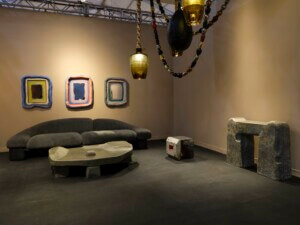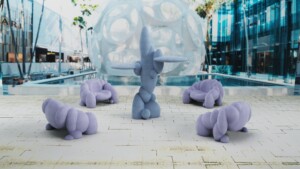Aric Chen is the new curatorial director of Design Miami, the premiere show of collectible design, which features the world’s top designers and architects. The show returns for its 15th edition December 2 through 8, 2019, alongside Art Basel, showcasing a body of work that revolves around the theme of environmental sustainability. Until recently, Chen was the lead architecture and design curator at the soon-to-open Hong Kong museum M+. Long before that, he grew up in Chicago with his Taiwanese mother before studying architecture at Berkeley and then design history at Cooper Hewitt. In 2008, he was the co-creative director at Design Fair Shanghai, and served as the creative director at Beijing Design Week from 2011 to 2012. Chen now lives in Shanghai, where he teaches and works as M+’s curator-at-large.
A former Archpaper columnist himself, Chen recently spoke with AN’s products editor Gabrielle Golenda about the current state of design, the environment, and issues affecting the industry, as well as major changes that will shape the field in the coming years.
AN Interior: How is the environmental impact of humanity on the world affecting design?
Aric Chen: When it comes to issues of the environment, I don’t think we can talk about design as solving problems anymore, as we now realize that the problems are too complex to “solve.” That being said, design offers a way to help change behaviors, to mitigate our impact on the planet, and to adapt and build resilience to what we can’t change. It’s prompting us to rethink the relationship between natural and man-made, raw materials and waste, and production and consumption in exciting and promising ways.
How can platforms like Design Miami influence how we think about these issues? How are you addressing sustainability at the show?
Design Miami, and the work it shows, has always been about more than aesthetics and form. To me, what makes a design “collectible” are the ideas that inform it: the experimentation—in terms of these ideas, but also through materials, making, and, yes, aesthetics and form—that it embodies, and the messages and narratives it communicates. The best design speaks to the issues and concerns of its time, so questions around materials, production, and sustainability in our current environmental condition are naturally finding their way into Design Miami through the work of designers who are pushing the boundaries of experimentation and discourse—and, I hope, finding a market to support their work in doing so. As such, I hope we’re contributing to a cultural conversation while also taking practical steps to make the fair more sustainable—for example, by partnering with the advocacy group A Plastic Planet to eliminate single-use plastics from the fair’s food and beverage.
Read the full interview on our interiors and design website, aninteriormag.com.











